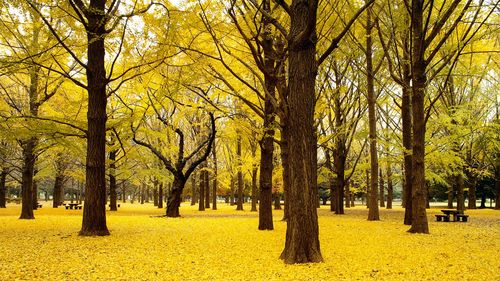The Ultimate Guide to Backpacking in Yellowstone National Park
Yellowstone National Park is known for its stunning landscapes, amazing wildlife, and natural wonders. Backpacking in this park is an experience that should not be missed. It offers an escape from the hustle and bustle of everyday life, as well as a chance to connect with nature. Here’s everything you need to know to plan your perfect backpacking trip to Yellowstone.
Choosing the Right Backpacking Route
Yellowstone National Park offers several scenic routes for backpackers. Each route has its unique features, and choosing the right one largely depends on your level of experience and the amount of time you have. Some of the popular backpacking trails in Yellowstone include the Bechler River Trail, the Yellowstone River Trail, and the Geyser Basin Trail.
Planning Your Trip
Once you’ve picked the backpacking route that suits you, it’s time to start planning your trip. It’s crucial to pack the right gear, food and other essentials. A backpack, a sleeping bag, a tent, a headlamp, camping stove, and water filter are some of the essential gear you’ll need. Pack lightweight but nutritious food like oatmeal, jerky, nuts, and dried fruits as they provide quick energy throughout your journey.
Permits and Regulations
It’s essential to obtain a backcountry camping permit from the park’s Backcountry Office before beginning your backpacking trip. Yellowstone National Park has strict regulations regarding camping and hiking in the backcountry. The regulations aim at promoting conservation by reducing human impact on the environment.
Leave No Trace Principles
As a backpacker, it’s essential to understand and adhere to the Leave No Trace principles, which help to protect the environment while enjoying the park. These principles include packing out all trash, minimizing campfire impacts, respecting wildlife, staying on designated trails, and respecting other park visitors.
Weather and Safety
Yellowstone Park experiences unpredictable weather changes. Even during summer, snowfall can occur anytime, so it’s essential to pack warm clothes and a rain jacket. Always stay aware of the weather forecast and be prepared for changes. Safety in the backcountry is paramount. Carry a first aid kit, a map, and a compass, and be familiar with using them. It’s also advisable to hike with a partner and share your trip itinerary.
Conclusion
Backpacking in Yellowstone National Park is an incredible adventure that requires proper planning and preparation. From choosing the right backpacking route to adhering to park regulations, preparing for weather changes, and protecting the environment through Leave No Trace principles – this guide has covered everything you need to know. Follow these tips, and you’ll have a memorable and safe backpacking trip to Yellowstone National Park.
(Note: Do you have knowledge or insights to share? Unlock new opportunities and expand your reach by joining our authors team. Click Registration to join us and share your expertise with our readers.)
Speech tips:
Please note that any statements involving politics will not be approved.
